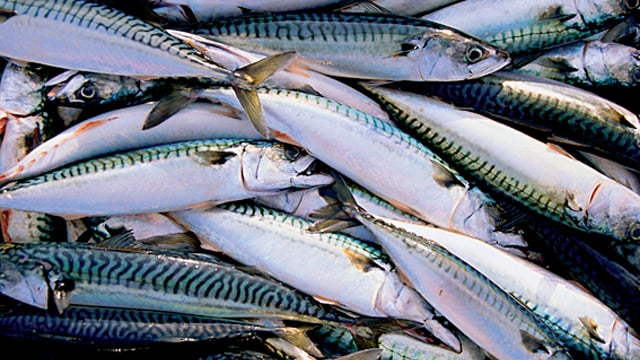Optimizing fish processing with decanters
By 2030, people worldwide will be consuming more fish, according to the latest report from the U.N. Food and Agriculture Organization. Total fish production will reach 204 million tons in 2030, up 15% from 2018. The share of fish production destined for direct human consumption will also continue to grow, reaching 89% with the remaining 11% as non-food products.
DATE 2023-11-28That is why optimizing fish processing with decanters is vital to fish processing companies. Widely used in the fish industry, decanters play – and will continue to play – a key role in separation processes for fish products, such as fish meal and fish oil. Among the decanter separation processes are the:
- Removal of oil and solids from fish press water or from whole fish to produce fish meal and fish oil
- Removal of solids from fish products hydrolyzate proteins for onward processing and concentration
- Low-temperature extraction of proteins from fish meat (surimi) and or fish oil extraction for human consumption
Process challenges and decanter design
Different applications pose unique challenges for a decanter. Each decanter application in the fish industry requires a specific design to overcome various challenges, these being among them:
- Variable solids content. The solids load in fish press water, for instance, can vary from 2-10% by volume, depending on the type of fish and conditions for fish conservation. In contrast, whole fish applications solids content may fluctuate up to 50% by volume. As a result, the decanter may be subjected to a high and variable torque load, which impacts the conveyor type and gearbox size selection.
- Fine solids. In addition to the volume or quantity of solids to be removed, the quality of the solids may also vary. Tiny solids are more difficult to separate than larger particles. This is especially true of fish protein hydrolysates, which make it difficult to transport the solids and therefore impacts the decanter bowl geometry as well as transportation aides to facilitate the movement of solids through the decanter.
- Sand and fish bones. Hard particles in the feed, such as bone and sand, call for surface abrasion protection to prevent damage and minimize the wear of moving parts.
- Food-grade safety: Producing surimi or high-quality fish oil for omega 3, for instance, calls for compliance with global hygienic design standards and cleaning validation. The Foodec Hygiene Plus is best-in-class when it comes to hygiene levels. The decanter’s surfaces are designed to be extremely smooth reducing build-up and making it easier to clean. It also has an integrated cleaning-in-place bar that is optimized to clean every part of the inside of the frame and the outside of the bowl while minimizing the amount of cleaning agents required.
Decanter components that impact performance
Keep in mind that good decanter performance lies in the efficiency of its components, especially the:
- Screw conveyor with the correct pitch and feed zone design, as well as wear protection to ensure effective scrolling of the sedimented solids and wear and tear resistance. Baffle disc is recommended in many applications to improve liquid clarification and solids handling.
- Direct drive gearbox for a high force with minimal differential speed
- Bowl and solids transportation aids, such as the double amount of ribs for high friction for efficient solids transport and seal-welded ribs for maximum hygiene level.
Keep an eye on these decanter parameters
While getting the design of decanter components right is essential, it is also vital to pay attention to these five parameters: these impact separation efficiency and overall process performance.
- Feed flow rate. The solids load usually determines the correct feed flow rate in relation to the inlet size and decanter volume. The throughput influences the residence time of the decanter. In general, the correct flow rate optimizes separation efficiency. Process fluids that flow too quickly through the decanter result in fluids containing too many particles or solids. Process fluids that flow too quickly through the decanter result in fluids containing too many particles or solids. Process liquids that move too slowly through the decanter may cause solids to the backsplash in the conveyor body or accumulate in the feed zone, which can cause clogging. It is also essential to select the suitable feed pipe diameter to ensure proper feed velocity.
- High feed viscosity or temperature. The higher the feed temperature, the lower the feed viscosity, and the faster the sedimentation velocity. Maintaining a feed temperature above 85°C when possible will cause solids to settle more quickly out of the feed. This increases liquid-liquid as well as liquid-solid separation efficiency. However, keep in mind that high feed temperatures can negatively impact quality if your application requires a low temperature.
Feed flow (Q)
Bowl speed (N=G force)
Liquid outlet radius (R-r= pond depth)
Differential speed (Δ n)
- High bowl speed. The higher the bowl speed, the higher the g-force, and the better the separation efficiency. As a result, both clarification and cake dryness improve; however, this may lead to higher pressure inside the decanter, higher energy consumption, and higher equipment wear and tear.
In addition, high solids compaction may result due to very high pressure on the bowl wall. In extreme cases, compression can be so high that the conveyor cannot transfer the solids out of the bowl, which may lead to clogging and downtime. It is therefore important to check both the solids load in the feed and the characteristics of the solids.
- Liquid outlet radius. Depending on various factors, the liquid outlet may be located closer to or farther away from the bowl centre. The closer the outlet is to the bowl centre, the deeper the pond, the layer of fluid that forms on the bowl shell. The smaller the liquid outlet, the deeper the pond; the deeper the pond, the greater the fluid volume to be clarified. This also raises the hydraulic pressure on the solids, increasing separation efficiency and enhancing solids handling. It is important to keep in mind that a deeper pond may also have a negative impact on separation efficiency, increasing the moisture retained in the solids
- Low differential speed. Differential speed is the relative speed of the conveyor with respect to the bowl. The differential speed of most Alfa Laval decanters is slightly slower than the bowl speed. The lower the differential speed, the higher the residence time of solids inside of the decanter and vice versa. A low differential speed ensures optimal solids dehydration. That said, it is important that the differential speed is not too high and not too low. The higher the speed, the cleaner the centre. However, if the differential speed is too low, solids may remain in the clarified liquid.
Optimizing fish processing with decanters
To maximize decanter performance, all parameters must be tailored to your specific process conditions – from fish type, farmed or wild, freshwater or saltwater to the properties of the fish press water or stick water, through to the desired quality of the products clarified out of or extracted from the decanter.
Alfa Laval has a broad range of decanters used to extract, clarify, dewater and recover valuable food, ingredients and non-food products from fish processing lines. Each decanter has various parameters – feed flow rate, feed viscosity (temperature), bowl speed, liquid outlet radius and differential speed – impacting performance.
That is why it is important to have the expertise to finetune parameters to your process requirements. It is also key to have a lab centrifuge (or even better one with 90° swinging tubes) on-site to be able to measure suspended solids and oil in the feed and in the centre. The availability of an oven also makes it possible to measure the cake dryness and a solvent extraction device, such as Soxhlet, to measure the fat in dry matter. And let us not forget cleanability and validation is vital for safe production according to global hygienic standards.
With the demand for fish and fish products on the rise, optimizing your processing lines with decanters can help you realize more uptime, higher productivity and lower costs.


